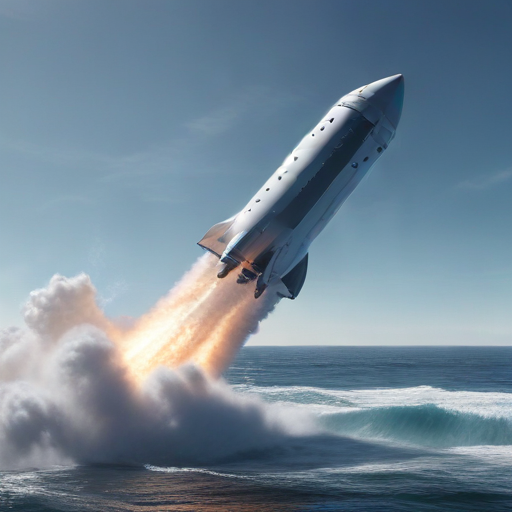SpaceX successfully conducted its sixth test flight of the Starship vehicle on November 19, launching from the Boca Chica test site in Texas. The much-anticipated flight began at 5 p.m. Eastern and proceeded without issues during the countdown. Notably, President-elect Donald Trump was among the attendees, highlighting the strong collaborative spirit between government and private space initiatives.
The Super Heavy booster, designated Booster 13, separated from the Starship upper stage approximately two minutes and 45 seconds post-liftoff. However, after separating, the booster was diverted away from its intended landing back at the launch site, and ultimately landed in the Gulf of Mexico, where it tipped over and exploded shortly thereafter. While this was a setback compared to the previous launch on October 13, when SpaceX successfully recovered the booster, it is still a valuable learning experience for the company.
Despite the setback of the booster, the Starship upper stage, referred to as Ship 31, successfully reached a suborbital trajectory. During its flight, SpaceX reactivated one of the Raptor engines as part of its testing for future deorbit maneuvers, demonstrating the vehicle’s capabilities.
Upon reentry over the Indian Ocean, Starship faced a rigorously tested profile, with intentional challenges to assess its control systems and thermal protection capabilities. Kate Tice, a SpaceX webcast host, warned that the splashdown could be less than smooth, reflecting the high-pressure testing conditions they intended for this flight. Ultimately, Starship reentered the atmosphere successfully, albeit with some damages observed on a flap and parts of its thermal shield, and completed a powered soft landing in the ocean 65 minutes after launch.
Looking ahead, SpaceX plans to incorporate various upgrades into the next iteration of the Starship upper stage. This includes enhanced propellant capacity, allowing it to carry more payload—from 1,200 tons to 1,500 tons—while optimizing its flaps for better heat protection during reentry. The efficient timeline between flights, with this one taking place just a month after the last, illustrates SpaceX’s ability to adapt and streamline its testing processes without significant regulatory hurdles.
In summary, despite challenges faced during the flight, this test further propels SpaceX toward its ambitious goals, showcasing resilience and an iterative approach to innovation that could open up new possibilities for future space missions. The company’s ongoing advancements ensure that each test enhances understanding and functionality, building hope for even more significant achievements in space exploration.
